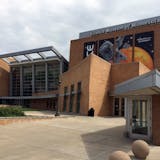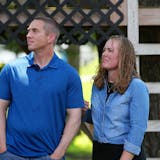Like many Minnesota parents, Natasha Roberts spent the summer of 2020 looking for a school that guaranteed her children could attend classes in person. Before that, she'd never considered sending her kids to a private school.
"I thought it was a great option for people who wanted that for their kids," said Roberts, whose children had been enrolled in Wayzata public schools. "But we were in a school district we were more or less happy with."
However, after a year at Redeemer Christian Academy — a small Christian school that straddles the border between Wayzata and Orono — Roberts' attitude took a 180-degree turn. Her kids probably won't attend a public school again.
The Roberts family's story illustrates a broader trend among smaller metro-area private schools: Although enrollment growth has slowed, those schools are seeing higher-than-usual retention among new enrollees, according to principals and observers.
"If they chose to attend a non-public or a private school, they found a strong community," said Tim Benz, president of Minndependent, a coalition of more than 150 Minnesota private schools. "The retention of those families is paramount."
Private schools statewide grew their enrollment by nearly 4% last fall, according to state data. While that's less than the increase they posted in 2021, that growth has remained a boon for smaller private schools across the Twin Cities, many of which have had to hire new staffers and add classroom space to accommodate increased demand.
At St. Rose of Lima Catholic School in Roseville, Principal Sean Slaikeu hired a counselor for the first time to handle low-level disciplinary cases, now that he's got twice as many students as he did in 2019.
"It takes down the level of severity of when a student has an issue," he said. "Instead of going to the principal and it becoming this huge alarm, it becomes more of a restorative piece."



